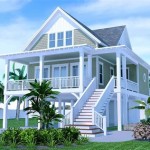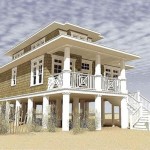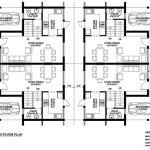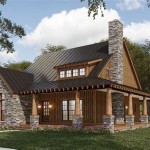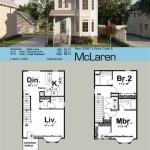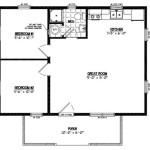Floor Plans For Duplex Apartments: A Comprehensive Guide
Duplex apartments, characterized by two individual living units within a single building, present unique opportunities and challenges in terms of floor plan design. Effective floor plans are crucial for maximizing space utilization, ensuring privacy for residents, and optimizing the overall functionality of each unit. This article explores various considerations and design principles related to floor plans for duplex apartments, covering aspects from basic layout options to advanced features and accessibility considerations.
The success of a duplex apartment design hinges on several factors. Understanding the needs and preferences of potential tenants is paramount. This includes considering the target demographic, their lifestyle, and their specific requirements for living space. Furthermore, compliance with local building codes, zoning regulations, and accessibility standards is non-negotiable. Finally, budgetary constraints play a significant role in determining the feasibility of certain design choices and material selections.
Key Considerations in Duplex Apartment Floor Plan Design
Several key considerations govern the design and implementation of effective duplex apartment floor plans. These considerations address fundamental aspects of spatial organization, functionality, and tenant satisfaction.
Privacy and Sound Insulation: A primary concern in duplex design is ensuring adequate privacy for both units. This extends beyond visual privacy to encompass sound insulation. Walls separating the units should be constructed with sound-dampening materials and techniques to minimize noise transfer. Careful attention should also be paid to the placement of bedrooms and living areas in relation to the shared wall. Avoiding the placement of bedrooms directly adjacent to the living room of the neighboring unit helps mitigate potential noise disturbances. Furthermore, the strategic placement of closets and storage spaces along the shared wall can act as a buffer zone, further reducing sound transmission.
Efficient Space Utilization: Duplex apartments often need to maximize limited space. Thoughtful floor plans should avoid wasted areas and prioritize functional living spaces. Open-concept layouts can enhance the sense of spaciousness, particularly in smaller units. Multi-functional furniture, such as sofa beds or storage ottomans, can also contribute to efficient space utilization. In addition, vertical space should be exploited wherever possible. Utilizing tall cabinets, shelving units that reach the ceiling, and lofted storage areas maximizes storage capacity without consuming valuable floor space.
Separate Entrances and Amenities: Maintaining distinct entrances for each unit is essential for providing residents with a sense of independence and privacy. Separate utility meters for electricity, gas, and water are also crucial for accurate billing and resource management. Shared amenities, such as laundry facilities or outdoor spaces, should be designed to accommodate the needs of both units while minimizing potential conflicts. Clear guidelines should be established regarding the use and maintenance of shared amenities to ensure fairness and prevent disagreements.
Common Duplex Floor Plan Layouts
Several common floor plan layouts are frequently employed in duplex apartment design. Each layout offers distinct advantages and disadvantages depending on the specific site conditions, building configuration, and tenant preferences.
Side-by-Side Duplex: In this layout, the two units are situated adjacent to each other, sharing a common wall. This configuration is often used for rectangular lots and allows for relatively straightforward construction. Side-by-side duplexes are generally easier to design and build compared to other configurations. However, careful attention must be paid to sound insulation between the units to mitigate noise transfer. The exterior design should also consider the aesthetic harmony of the two units, ensuring a cohesive and appealing appearance.
Up-and-Down Duplex: This layout features one unit on the ground floor and another on the upper level. Up-and-down duplexes are well-suited for sloped sites or areas with limited lot space. The upper unit often benefits from enhanced views, while the lower unit may have direct access to a yard or garden. Staircase design is a crucial aspect of this layout, ensuring safe and convenient access to the upper unit. Furthermore, consideration should be given to the structural support and sound insulation between the floors to minimize noise transmission.
Front-and-Back Duplex: This layout positions one unit at the front of the building and another at the back. This configuration is suitable for long, narrow lots and can provide each unit with its own private outdoor space. Front-and-back duplexes often require careful planning to ensure adequate natural light and ventilation for both units, particularly the unit located at the back of the building. Furthermore, the placement of entrances and parking areas should be carefully considered to minimize disruption and ensure easy access for residents.
Designing Functional Spaces Within Duplex Apartments
Beyond the overall layout, the design of individual spaces within each unit is critical for creating functional and comfortable living environments. Careful consideration should be given to the size, layout, and features of each room to optimize usability and appeal.
Kitchen Design: The kitchen is often considered the heart of the home, and its design should prioritize functionality and efficiency. Adequate counter space, storage capacity, and appropriate appliance placement are essential. Open-concept kitchens that flow seamlessly into the living area can enhance the sense of spaciousness and facilitate social interaction. The selection of durable and easy-to-clean materials is also important for maintaining a hygienic and aesthetically pleasing kitchen environment.
Bathroom Design: Bathrooms should be designed to be both functional and aesthetically pleasing. Adequate ventilation is crucial for preventing moisture buildup and mold growth. The layout should accommodate the needs of all users, including individuals with mobility limitations. Features such as grab bars, raised toilet seats, and walk-in showers can enhance accessibility and safety. The selection of water-efficient fixtures can also contribute to environmental sustainability and reduced utility costs.
Bedroom Design: Bedrooms should provide a comfortable and relaxing retreat for residents. Adequate closet space is essential for storing clothing and personal belongings. The placement of windows should maximize natural light and ventilation while ensuring privacy. The size and layout of the bedroom should accommodate a variety of furniture arrangements, allowing residents to personalize their space to suit their individual preferences. Consideration should also be given to the placement of electrical outlets and lighting fixtures to ensure convenience and functionality.
Accessibility Considerations in Duplex Floor Plans
Designing duplex apartments with accessibility in mind is not only ethically responsible but also expands the potential tenant pool. Incorporating accessibility features can make the units more usable for individuals with disabilities, seniors, and families with young children.
Wheelchair Accessibility: Wheelchair accessibility requires careful attention to door widths, hallway clearances, and turning radii. Doorways should be at least 32 inches wide to accommodate wheelchairs, and hallways should be at least 36 inches wide to allow for easy maneuverability. Ramps or elevators should be provided to access units on different levels, and bathrooms should be designed with roll-in showers and accessible toilets. Kitchens should also be designed with adjustable-height countertops and accessible storage spaces.
Universal Design Principles: Universal design principles aim to create environments that are usable by people of all ages and abilities. This includes features such as lever-style door handles, rocker-switch light controls, and contrasting color schemes to enhance visibility. Universal design also emphasizes the importance of providing clear and consistent signage, tactile paving, and audible signals to assist individuals with visual or auditory impairments.
Adaptable Design Features: Adaptable design features allow units to be easily modified to meet the changing needs of residents over time. This includes features such as reinforced walls to support the future installation of grab bars, removable cabinets to provide knee space under countertops, and electrical outlets placed at varying heights to accommodate individuals with different reach ranges. Adaptable design features can significantly enhance the long-term usability and value of duplex apartments.
Maximizing Value and Appeal through Floor Plan Design
The floor plan of a duplex apartment plays a significant role in determining its value and appeal to potential tenants. Well-designed floor plans that offer a comfortable, functional, and aesthetically pleasing living environment are more likely to attract and retain high-quality tenants.
Curb Appeal and First Impressions: The exterior appearance of a duplex apartment is the first thing that potential tenants see, and it can significantly influence their perception of the property. A well-maintained exterior with attractive landscaping and clearly marked entrances can create a positive first impression. The overall design should be cohesive and harmonious, reflecting the quality and attention to detail that can be expected within the units.
Modern Amenities and Finishes: Incorporating modern amenities and high-quality finishes can significantly enhance the appeal of a duplex apartment. This includes features such as stainless steel appliances, granite countertops, hardwood floors, and energy-efficient windows. Smart home technology, such as programmable thermostats and remote-controlled lighting, can also be attractive to tech-savvy tenants. The selection of durable and low-maintenance materials can also reduce long-term maintenance costs and enhance the property's overall value.
Outdoor Living Spaces: Providing private outdoor living spaces, such as balconies, patios, or gardens, can significantly enhance the appeal of a duplex apartment. Outdoor spaces provide residents with a place to relax, entertain guests, and enjoy the fresh air. The size and layout of the outdoor space should be proportional to the size of the unit, and consideration should be given to providing privacy and shade. Features such as outdoor lighting, comfortable seating, and attractive landscaping can further enhance the usability and appeal of outdoor living spaces.

Duplex J2030d Plansource Plans Floor House

100 Best Duplex Floor Plans Ideas

The Zup Of Sainte Croix Floor Plan Duplex Apartments A B C And D Scientific Diagram

Discover The Best Duplex Designs Floor Plans For Your Dream Home Beautiful Homes

Smart And Versatile Duplex Triplex House Floor Plans Houseplans Blog Com

Floor Plan Of Homes On A And Duplex Apartments The Pedro Scientific Diagram

Modern Duplex House Plans Blog Eplans Com

Modern Duplex House Plans Blog Eplans Com

Top 10 Duplex Floor Plan Ideas For Your Plot Happho

Duplex Plan J0129 14d Floor Plans House
Related Posts

